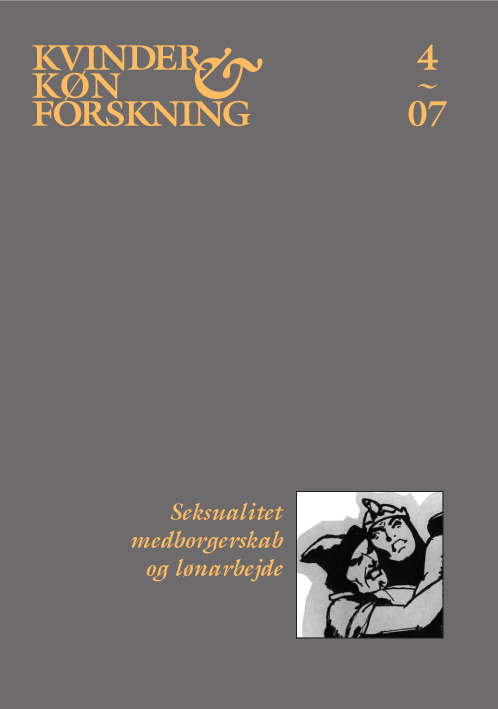Kvinders smag for mænd, mænds smag for kvinder. Heteroseksualitet som smagsfællesskab
DOI:
https://doi.org/10.7146/kkf.v0i4.27916Resumé
Heterosexuality has been largely untheorised within both sociology, feminism and gay and lesbian studies, which have traditionally been focusing on hierarchical dichotomies between men and women, heterosexuality and homo- sexuality. As the most prominent tales of heterosexuality today, post-structuralism and queer theory have contributed fruitfully to the denaturalisation of heterosexuality, but have also gained a monopoly of telling stories which are neither necessarily productive in terms of the scientific integrity nor no longer helpful for people in general. The article puts forward a critique of these scientific tales, among others the work of Judith Butler, as contributing to a rather monolithic concep- tualisation focusing on heterosexuality as on- ly a ‘discourse’, an ‘institution’, an ‘identity’ or a ‘norm’. Moreover, by constructing a new binary between ‘queer’ and ‘normal’, queer theory fails to transgress the logics and con- cepts of dichotomies and identity. The article argues that people in late modern Denmark in fact no longer strictly conforms to a hete- rosexual norm and therefore, it alternatively suggests a tale of heterosexuality as ‘a tribe or community of taste’ inspired by the sociolo- gists Michel Maffesoli and Henning Bech, addressing perspectives and categories such as lust, taste, aesthetics, sociality, sensation and emotions. This new tale is not intended to re- place post-structuralism or queer theory, but as both an adequate and a very productive qualified tale, it should be supplementary in respect of the fact that heterosexuality is a multifarious phenomenon which must be studied from various angles in different con- texts.Downloads
Publiceret
2007-12-15
Citation/Eksport
Wøldike, M. E. (2007). Kvinders smag for mænd, mænds smag for kvinder. Heteroseksualitet som smagsfællesskab. Kvinder, Køn & Forskning, (4). https://doi.org/10.7146/kkf.v0i4.27916
Nummer
Sektion
Artikler
Licens
Udgivelser i Kvinder, Køn og Forskning er beskyttet under Creative Commons License: CC Attribution-NonCommercial 4.0

